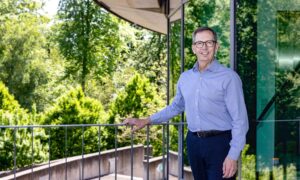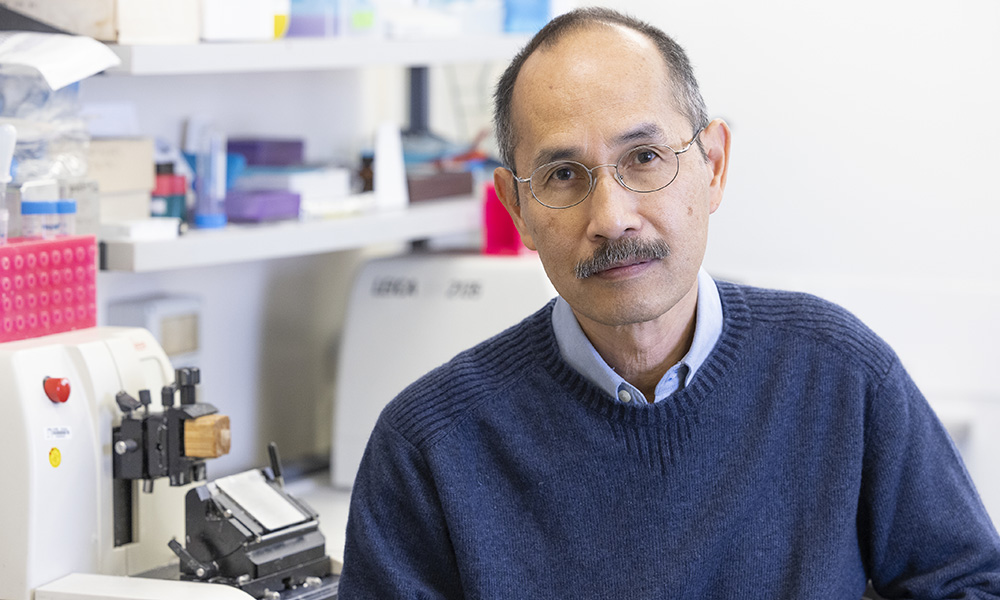
We are EMBL: Emerald Perlas on infrastructures and technology in research
Emerald Perlas, Head of the Histology Facility, talks about his experience in supporting multidisciplinary research at EMBL Rome and keeping up with technological advances

Over the years, EMBL Rome has gone through a number of space rearrangements, due to research group turnover and the establishment of new research infrastructures. But there’s one room that has always remained in the same place – the histology service – and that houses the person who has been there since the founding of EMBL Rome: Emerald Perlas.
Those who have worked at EMBL Rome have met Emerald, and appreciated his calm temperament and the precision of his experimental procedures. Here, he talks about his experiences at EMBL and reveals some of his personal interests.
At what age did you decide you wanted to work in science, and what triggered that?
I’ve always been interested in biology, ever since I was a child. Growing up in the Philippines as a kid, my siblings and I had my grandmother’s backyard as a wonderful setting for all sorts of games, ranging from climbing trees to flying kites or racing leaf boats, and as a source of insects, spiders, and soil bugs to observe in glass bottles. When we moved to the US, I always enjoyed science-related classes, even during my high school years, but I didn’t really have a clear idea what I wanted to do as an adult.
As part of the university financial aid and fellowship program, I worked part-time in a reproductive biology lab, setting up radio-immunoassays to monitor hormone levels in sheep. It was there where I met Thomas E. Adams, the lab PI, whose patience and eager explanations inspired me to follow a research career.
What’s the best part of working at EMBL?
I enjoy the multidisciplinary aspect of research done at EMBL that brings in not only expertise in various fields of study, but also encourages many collaborative efforts that may not be possible otherwise in other places. Throughout these years at EMBL Rome, I certainly gained a broad understanding of life sciences by regularly attending talks and participating in histological projects that involved many areas of research.
What is one thing about you that most folks don’t know?
I’m an amateur coin collector. I occasionally go through coin change received from a payment to see if there is that one particular coin that could be worth saving. These days, it can be a coin from the Vatican, for example, or a coin from a new EU member state. The oldest coin in my collection is a very obscure nickel minted in 1934. Even old telephone tokens are good adds. But I just collect for fun.
What is the favorite part of your job?
I don’t think I can ever get used to seeing the intricate patterns of how tissues of various organisms are made. In preparing tissues for histological analysis, one always aims to preserve the original state within the organism from which they were collected. This task is not always as straightforward as textbooks suggest. And so, there’s always a learning process involved to improve sample preparation and the other histological techniques that follow. A recent technological advancement called spatial-omics has allowed us to simultaneously study many tissue components in situ and provides a better understanding of how cells function in their complex environment. At the same time, advances in microscopy techniques are bringing many scales of resolution to the study of tissues.
Where do you find inspiration for solving problems at work?
I find that I can still fall back on the fundamentals learned from a number of courses I took during my university years, such as embryology, anatomy, organic chemistry, and physiology, useful in dealing with many issues while doing histology. When I need further information, the Szilard library has been very helpful in providing access to some key papers which keep me company during my daily train commute.
What is your passion?
Gardening. Besides being out around some green, I find it quite rewarding to get seeds to sprout and plants to thrive. It’s also something I used to share with my mother and that makes it very special for me.


